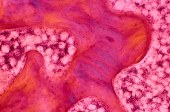
THURSDAY, April 5 (HealthDay News) — Developing stem cell lines that don’t have cells that potentially grow into tumors has been one of the biggest challenges for stem cell therapies.
But researchers from the Children’s Hospital of Philadelphia have generated a new line of stem cells that may solve that problem, at least for stem cells destined for the digestive system or possibly the lungs.
“The most significant use short-term will be for disease modeling. We’ve had to rely on mouse models, but we’re different than mice. A model with human cells could be very powerful,” said the study’s senior author, Paul Gadue, an assistant professor in the department of pathology and laboratory medicine at the hospital’s Center for Cellular and Molecular Therapeutics.
In the far future, he added, these stem cells could potentially be used as therapies for diseases such as diabetes or liver disease.
For the current research, the scientists used embryonic stem cells and induced pluripotent stem cells. Embryonic stem cells are derived from human embryos, often unused embryos from fertility treatments that are donated for research. Induced pluripotent stem cells are genetically engineered from other human cells, such as skin cells or blood cells. Both of these stem cell types can give rise to tumors.
“One of the big issues that’s critical when you think about potentially transplanting embryonic stem cells or induced pluripotent stem cells is that you have to make sure there are no undifferentiated cells in that batch, because undifferentiated cells can form tumors called teratomas,” said Gadue.
By stalling the development of these cells at what’s called the endodermal stage, the researchers found that the cells no longer created teratomas. The endoderm is the innermost layer of cells found in an early embryo that eventually develop into the lining of the digestive and respiratory tract.
These cells are then known as endodermal progenitor cells, and they have nearly unlimited growth potential in the lab, according to the authors.
But, delaying the cells at the endodermal stage does limit the type of cell they can later become. Endodermal progenitor cells can only become cells found in the digestive tract, such as intestinal, liver or pancreatic cells, and possibly lung cells, Gadue said.
It’s as if the initial stem cells are college freshmen undecided about what course of study they want to pursue. At this point, they can essentially choose any career. For stem cells, that means some choose to become tumors.
However, Gadue and his colleagues found a way to guide the cells to the school of study that might be right for them, such as a school of engineering or a school of art. And, for stem cells, that means the choice no longer includes becoming a teratoma. But, that also means that the cells’ pathways are more limited, like an engineering major who chooses a subspecialty of mechanical engineering, but can no longer choose art.
Of course, while creating a stem cell line that doesn’t produce teratomas is important, it’s also important that cells in that line grow up (differentiate) to become other cells. And Gadue’s team was able to create pancreatic beta cells that could produce some insulin. Beta cells are the cells that are damaged or destroyed in people with diabetes.
The investigators found that in the lab, the newly created beta cells produced insulin after being exposed to glucose (sugar), a function that is absent or impaired in people with diabetes. However, the cells didn’t achieve full function, producing only about 20 percent of the expected insulin.
Juan Dominguez-Bendala, director of stem cell development for translation research at the Diabetes Research Institute in Hollywood, Fla., said that the 20 percent function isn’t much different than what’s been seen in other studies, and that getting beta cells to mature fully in the lab is very difficult. He added that beta cells will often complete maturation once they’ve been transplanted.
But overall, Dominguez-Bendala said, “this [research] presents two major advantages over embryonic stem cells. First, by having this ‘intermediate’ population, we are restricting the differentiation options of the stem cells. For applications such as liver diseases or diabetes, these cells will readily become [liver cells] or beta cells, without unwanted byproducts such as [nerve or heart cells].” And second and more importantly, he said, they don’t pose the risk of forming tumors.
“If independently confirmed, this approach could certainly be of great potential to design safer and more efficient differentiation protocols for the treatment of diabetes and liver diseases, among other conditions,” Dominguez-Bendala added.
Albert Hwa, scientific program manager of cure therapies at the Juvenile Diabetes Research Foundation, called the new research “very interesting and encouraging because they don’t see teratomas.” He also agreed that the functionality of the beta cell could be further optimized.
“This was a first try with this protocol. The function of these cells seems very promising as well,” said Hwa.
Hwa also said the findings need to be replicated, but that he could see such stem cells being used for disease modeling.
However, Hwa added, a therapy for type 1 diabetes from this stem cell line is less likely “until we can look at this process consistently in a large scale. For the [U.S. Food and Drug Administration], you have to show data that you can consistently produce the same product.”
Results of the study are published in the April 6 issue of the journal Cell/Stem Cell.
More information
Learn more about stem cells from the U.S. National Institutes of Health.

